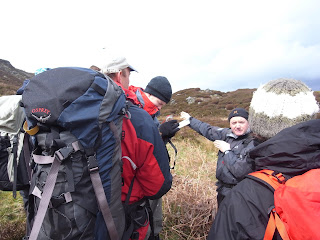
Tori James (pictured centre), the youngest British women to climb Everest when she was 25 back in May 2007, has passed her Mountain Leader summer award. Well done Tori!
I asked her and her two ML trainee friends, Sam (left) and Verity (right), about how their training went. Watch the blog for more on how Tori's Assessment went.
What is your definition of a Mountain Leader (ML)?
T: someone with excellent navigation skills and extensive experience of walking in mountainous areas
S: someone who encourages others to enjoy the mountains
V: a good communicator who can ensure the safety of others in the mountains
Why are you doing your ML training?
T: to enable me to work with Gold D of E Groups and lead expeditions overseas
S: to lead groups on overseas expeditions e.g. for the British Schools Exploring Society
V: to feel confident in my outdoor skills
Which books did you buy to swot up?
Hill Walking (Steve Long)
Mountaincraft & Leadership (Eric Langmuir)
Hostile Habitats – Scotland’s Mountain Environment (Mark Wrightham)
What are your top 3 mountain leader kit essentials?
T: good lightweight waterproofs, group shelter, first aid kit
S: spare hat & gloves, zinc oxide tape, head torch
V: dried apricots & nuts, thermos flask, good map case
Your best advice for Trail readers thinking about doing their ML?
T: consider doing an entry level qualification first e.g. the Basic Expedition Leader Award (BELA) or the Walking Group Leader Award (WGL).
S: get some voluntary experience e.g. with D of E or Scouts
V: book yourself onto the ML training course





